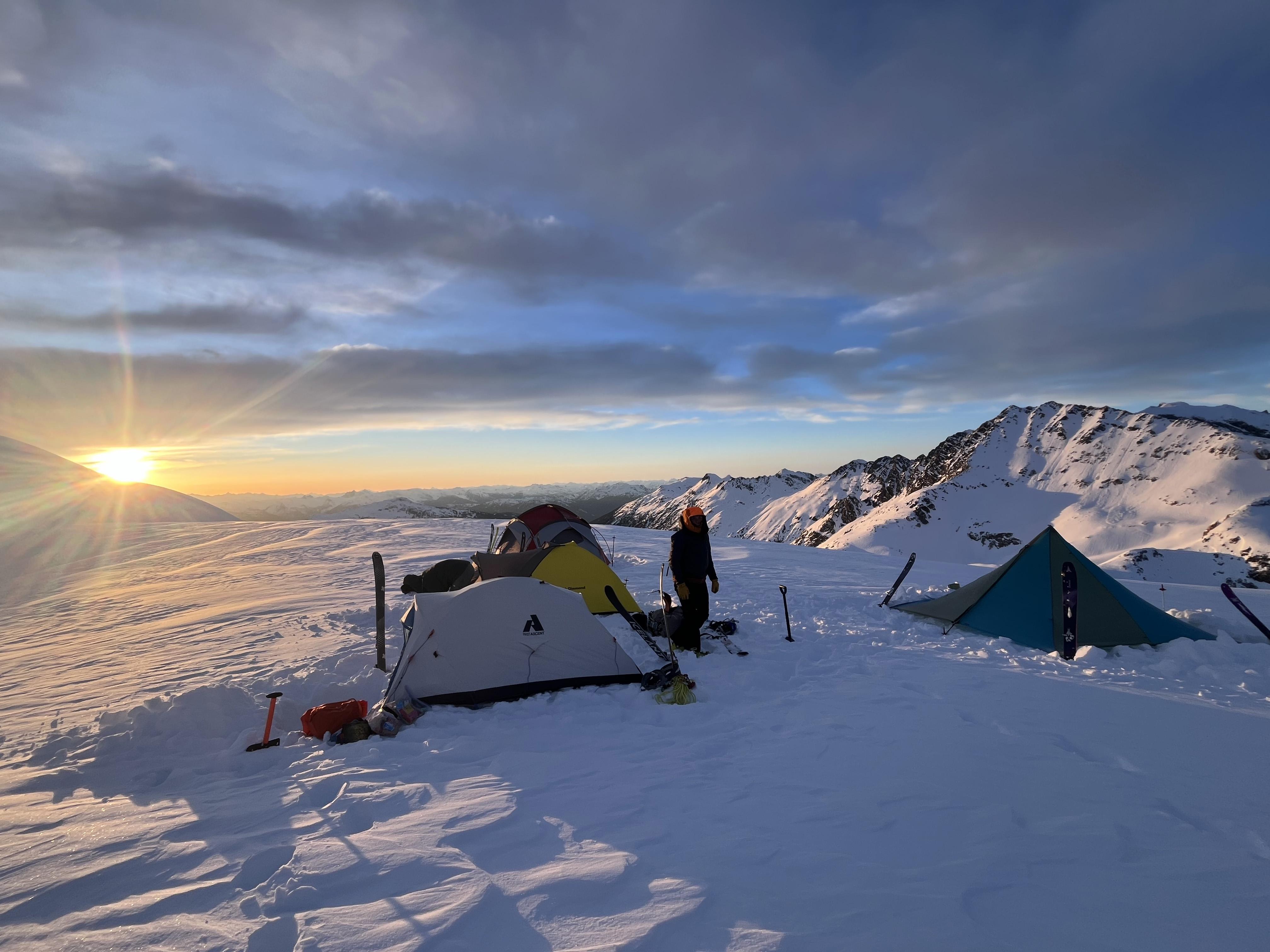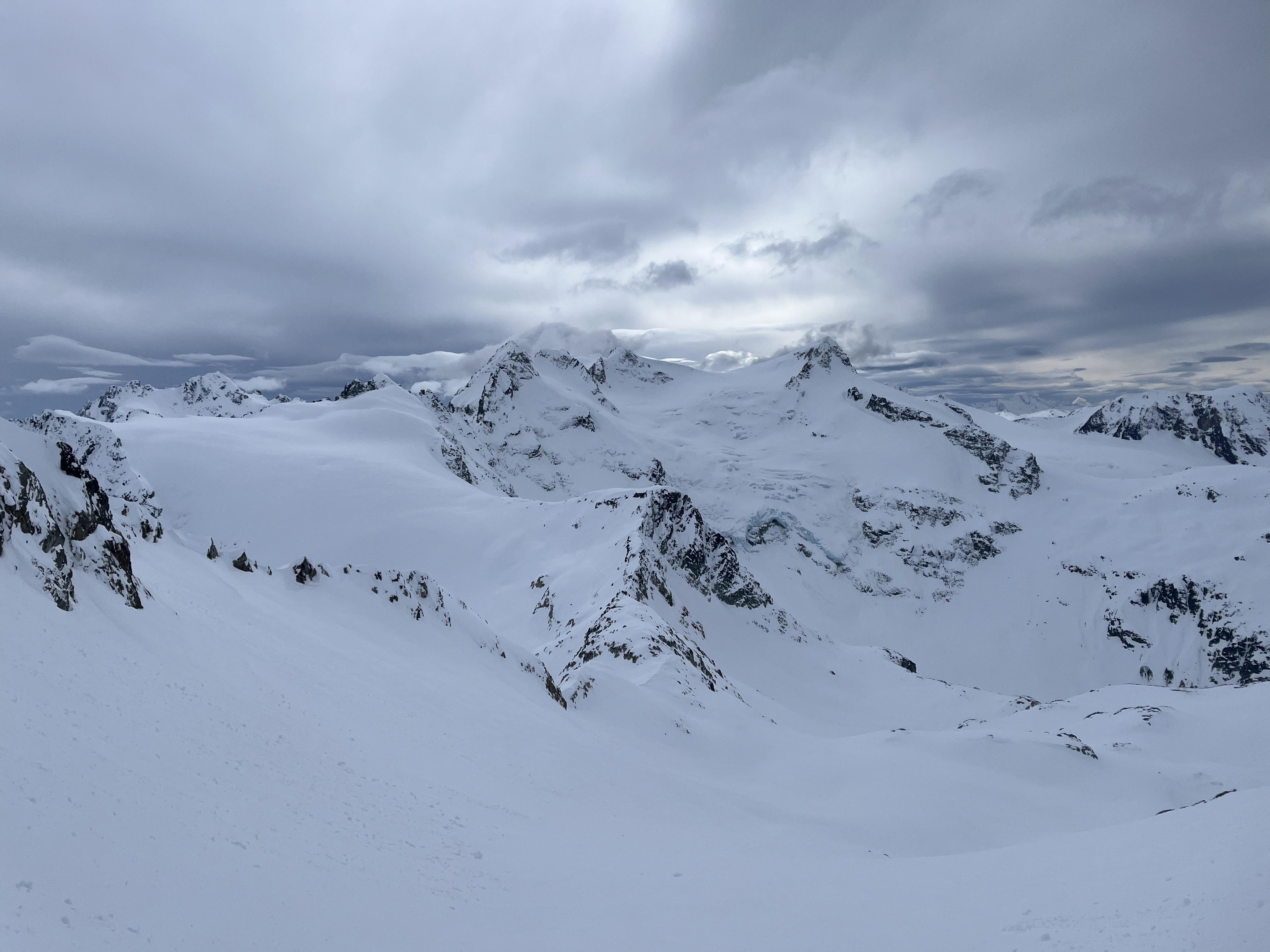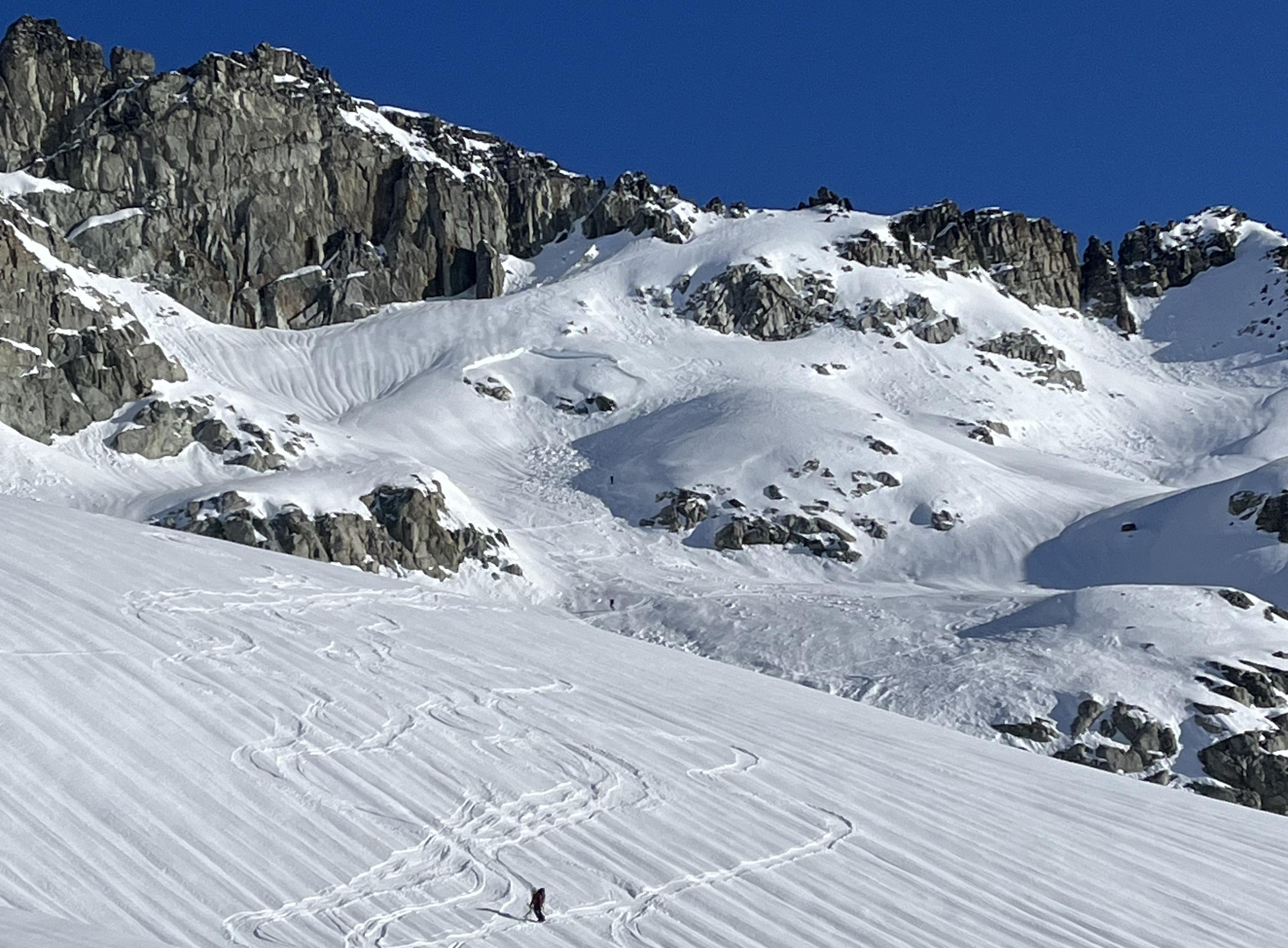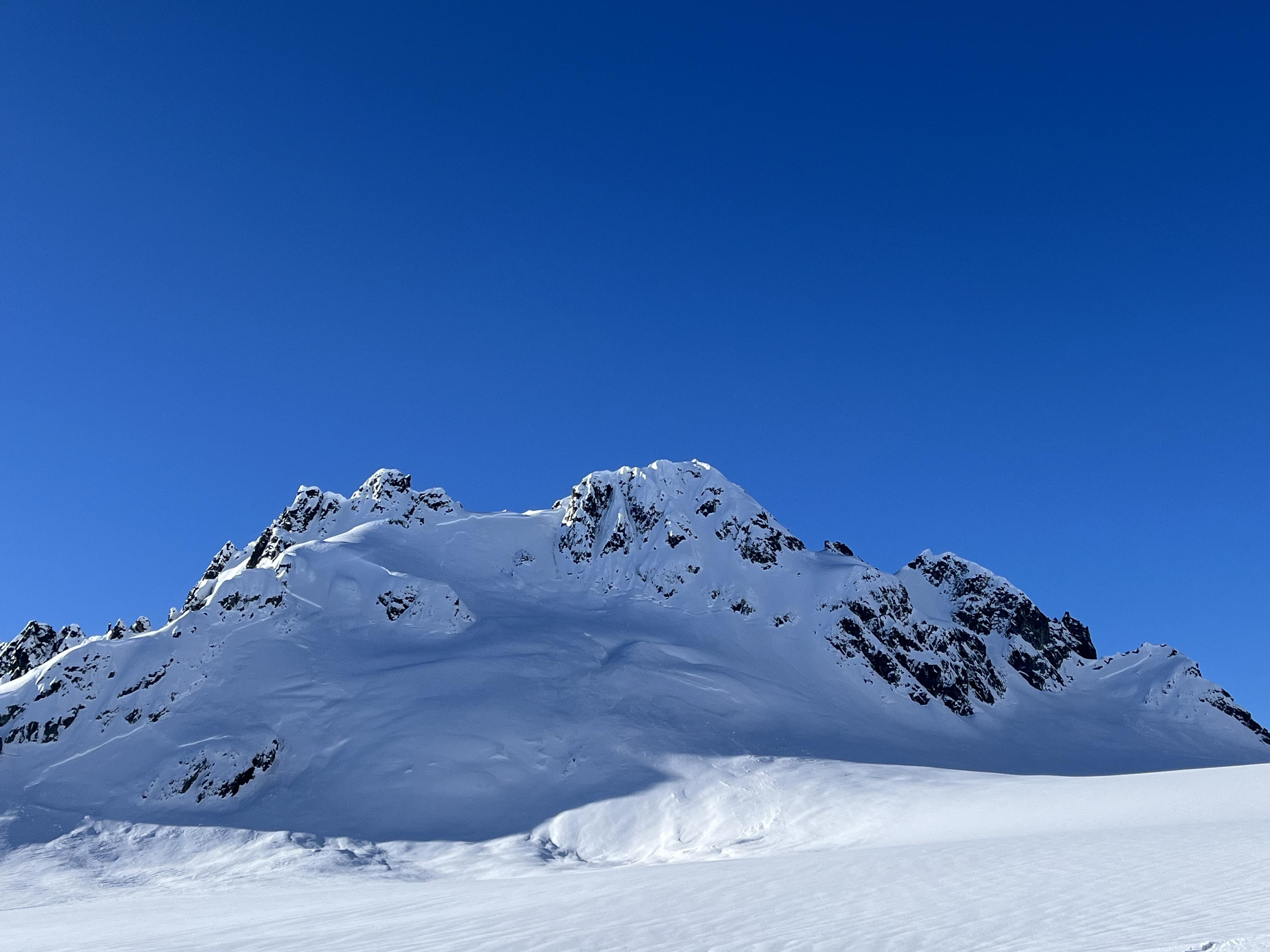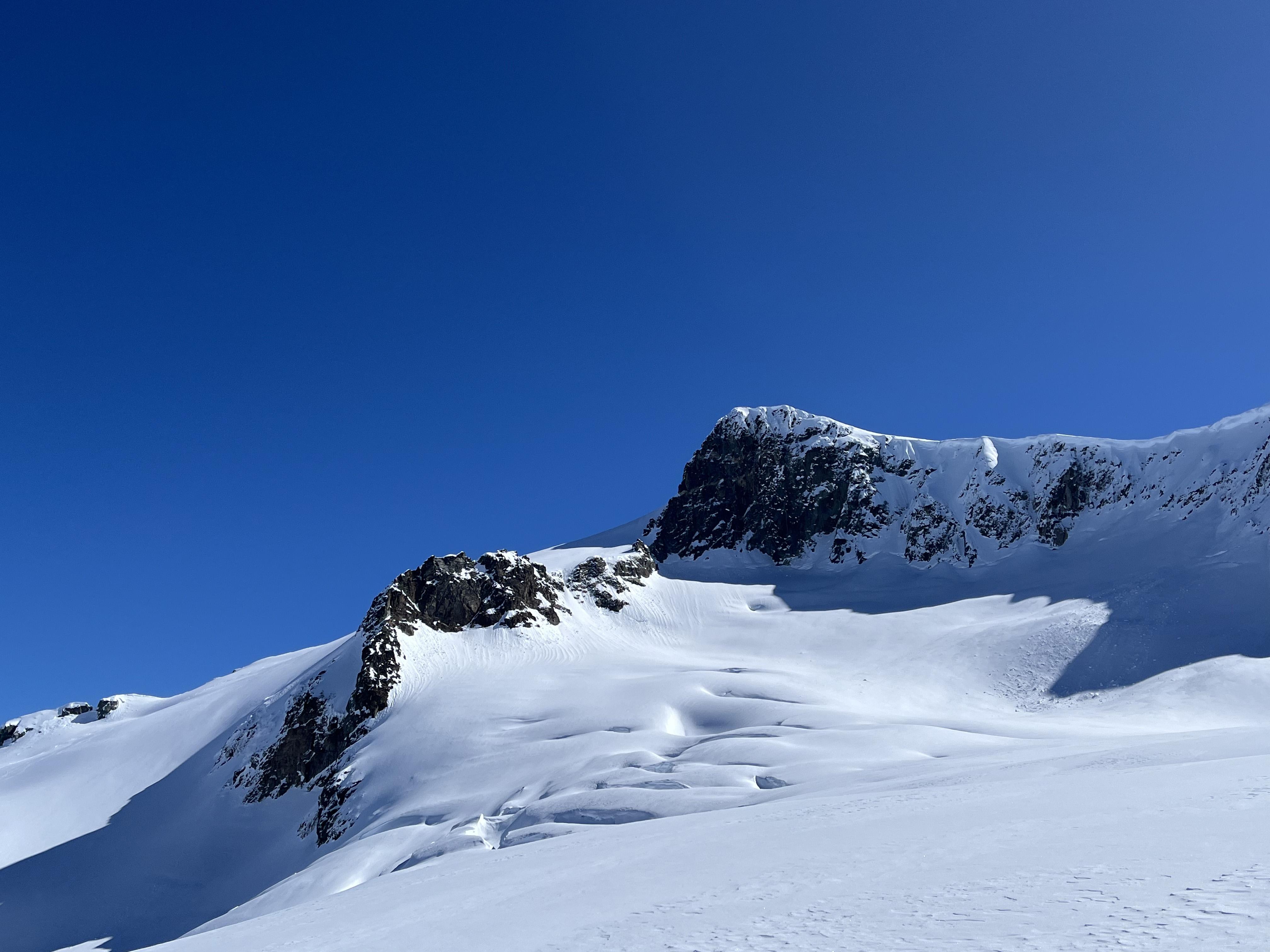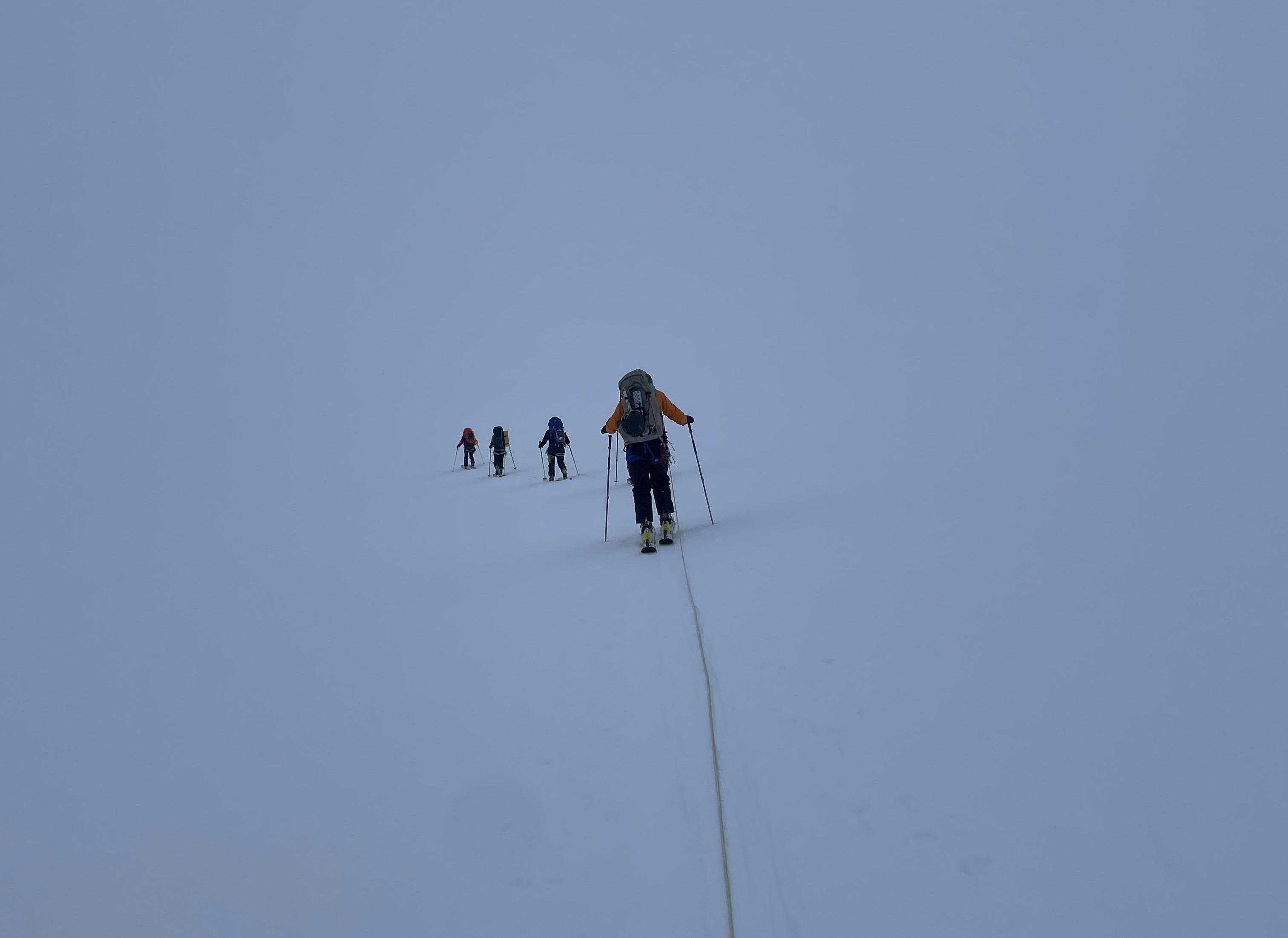Open crevasses and firm conditions on the Spearhead Traverse
Spearhead Traverse over March 22 to 24, 2024
March 22 to 24, 2024
A party of 6 and I completed the horseshoe from the Showcase T-bar on Blackcomb Mountain to the ski runs down Whistler Mountain. Essential gear was glacier ropes, crevasse kits, ski crampons and ice axes. Total distance traveled was 2770 meters elevation gained and 48 km (includes our descent down Whistler Mountain).
Day 1: March 22
1 to 2 cm of new snow overnight fell on the March 22nd melt-freeze crust, this made for easy and firm travel up the Horstman glacier, over the Blackcomb glacier and onwards to the East Col. The visibility was in and out with holes in the cloud layers (2000-3000 meters). The standard route was used to climb the lookers left side of the Decker North glacier and ski penetration was 2-5cm when climbing up to the NE shoulder at 2200m. Our group descended the SE side of Decker through the short central couloir (the left and right sides are rocky and not well filled in) to 2080m and on to the Trorey glacier. The natural avalanche cycle last week made us traverse through old avalanche debris before transitioning again to ascend.
A few open crevasses and sags on the glacier were easy to avoid with high overcast conditions and the flat light. Probed 220cm to 260cm of snow down to a hard ice layer. We ascended to the looker’s right side of Mount Pattison to the end of the glacier. At 2420m, we set the west facing bootpack up to 2440m (south shoulder of Pattison). Ice axes were used for the climb and conditions were a mix of faceted snow closer to the rocks to very firm snow further to the right and therefore made it hard effort to kick solid steps. The slope angle increased to 45 degrees plus at the final five or six steps. Our group descended the northeast side of Tremor glacier to 2220m as visibility diminished and set camp for the night. Temperatures ranged around -5 to -6 Celsius overnight.
Day 2: March 23
The next morning, we ascended the Tremor glacier roped up with zero visibility, avoiding open crevasses and the blue ice we had spotted on the western side the day before. The group continued east to handrail the far west facing rock wall and attached our ski crampons for extra security before continuing to climb as the slope angle increased (30+ degrees). Height of snow was over 320 cm+ (exceeded the probe length). Near 2600m, the group crossed a well-bridged bergschrund before bootpacking the firm melt-freeze crust the last 10 meters to the col.
As the clouds slowly lifted above 2500m, we descended the Platform glacier to the SE and reapplied our skins at the moat next to Quiver Peak. The col between the Ripsaw Peak and Quiver Peak is a big wind scoop half pipe feature and quite rocky this season – we bootpacked up the lookers righthand side (the last 15 or so meters) to gain the Ripsaw glacier at 2590m.
We ski traversed Ripsaw glacier, which had 10 to 15cm of boot top low-density powder and numerous open crevasses and big sags. Clear visibility through this section was well received and we climbed to 2450m. There are 3 routes to descend to the Naden glacier, and we chose the central line due to lack of coverage with the other two options. Though the central line is narrow, it was well-filled with snow and a rock anchor was used to lower the group one at a time (with skis on their backpacks) down the 25-meter pitch, with some avalanche debris at the bottom.
Continuing to ski tour across the Naden glacier was easy with no visible open crevasses and we then descended from the col between Macbeth and Couloir Ridge. Firm conditions and more old avalanche debris was skied to the ridge for a short bootpack up to 2240m. The crux of our Spearhead traverse was skiing the ESE facing lower Iago Connector line to 2100m - it was icy conditions on 35-40 degrees, full of avalanche debris and a potential fall could have had high consequence. We avoided the alternate high route, a bootpack along the ridgeline, as it seemed potentially time consuming with the lack of snow and rock features that required extra navigating and short-roping.
An old natural size 3 avalanche was on the SE aspect of Couloir Ridge, suspect that it failed on the Feb 2nd facet/melt-freeze crust layer and the avalanche travelled from ~2400m down to the flats at 1850m. We then ski toured up to 2400m on Iago glacier with ski crampons to ease slipping on the firm snow and set up our camp on a flat bench. With 360 degree views, we enjoyed the sunrise and the sunset through broken clouds. The NE wind was light to moderate gusts overnight, with light snow transport.
Day 3: March 24
The skiing down Iago Mountain to the Diavolo glacier (S-SE facing) was a difficult combination of runnels, new thin windslab (3-5cm) from the previous night and old avalanche debris from numerous loose wet and one slab avalanche (size 1.5). From 2180m, we ski toured, using our ski crampons again and avoiding the glacier sags, up the SE slope of Mount Benvolio to the col between Benvolio and Mount Fitzsimons (2480m). Some recent rock fall was seen on southerly aspects of Benvolio. The north face of Cheakamus Mountain had several old natural size 2-3 avalanches.
As we downhill skinned quickly across and climbed back up part of the Fitzsimmons glacier towards Overlord Mountain, numerous unsupported large cornices loomed above us. If our group were to climb this route again in the coming week(s), we would opt to climb the southside of Benvolio to avoid the exposure to cornices. Then we chose not to use the Overlord rappel station and avoided the crevasses high on the west facing side. We skied the north facing, low angle (20-30 degree) supported line, on the skiers right hand side of the glacier, avoiding a couple open crevasses and a few sags. The top 5cm plus of snow was mostly soft with a few sections of wind pressed powder, making for the best ski descent of the traverse. The ski tour ascent back up the Overlord glacier towards Whirlwind Peak requires climbing through crevasses (2150m-2200m) and a small section was well-bridged. The Overlord glacier was more open and exposed when compared to the past five seasons.
From 2320m, Whirlwind was a simple descent down to 1920m below the Kees and Claire Hut. This was followed by a short climb to the Musical Bumps and an up and down and up and down return to Whistler Mountain and onwards to the Village.

